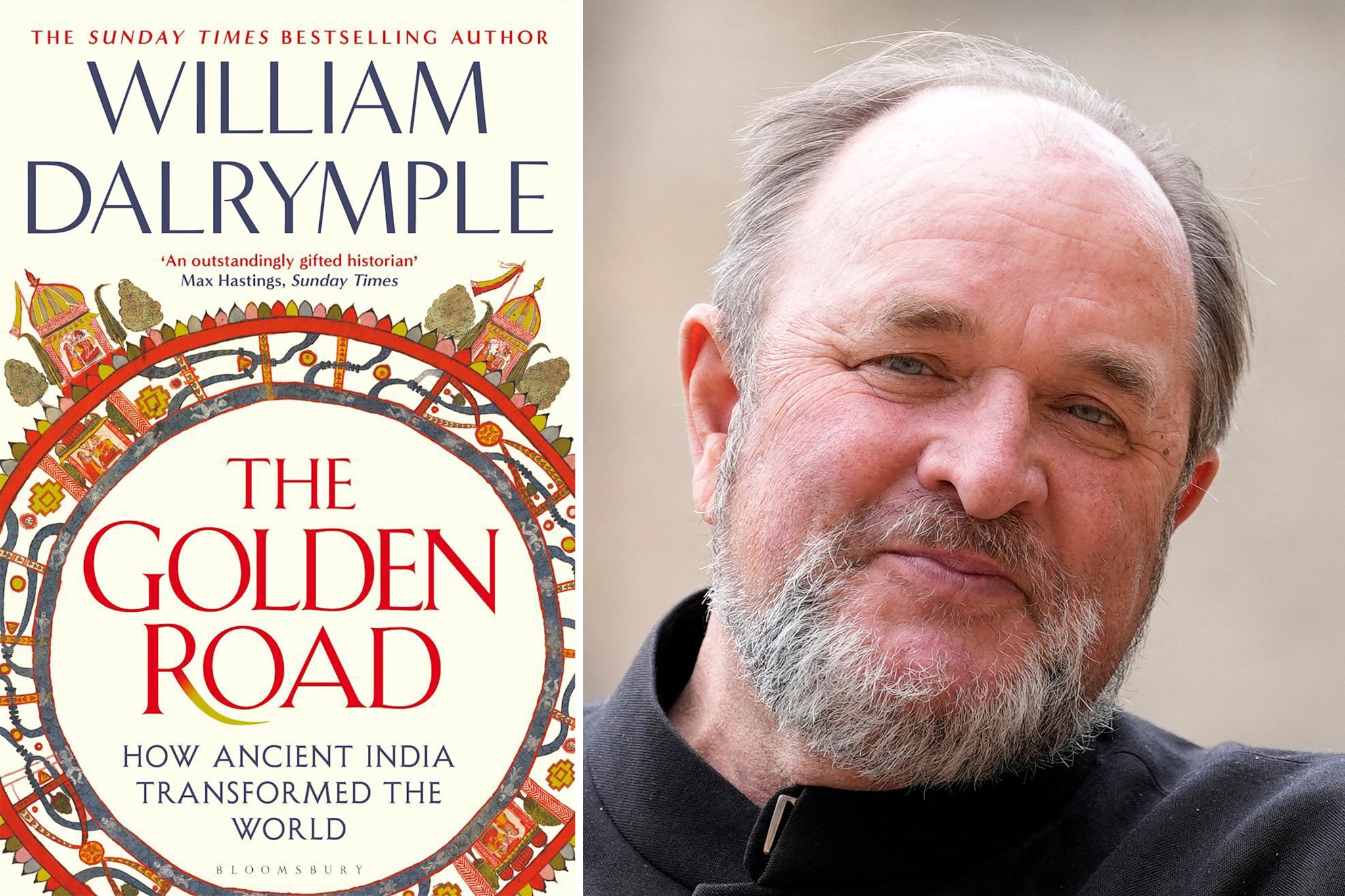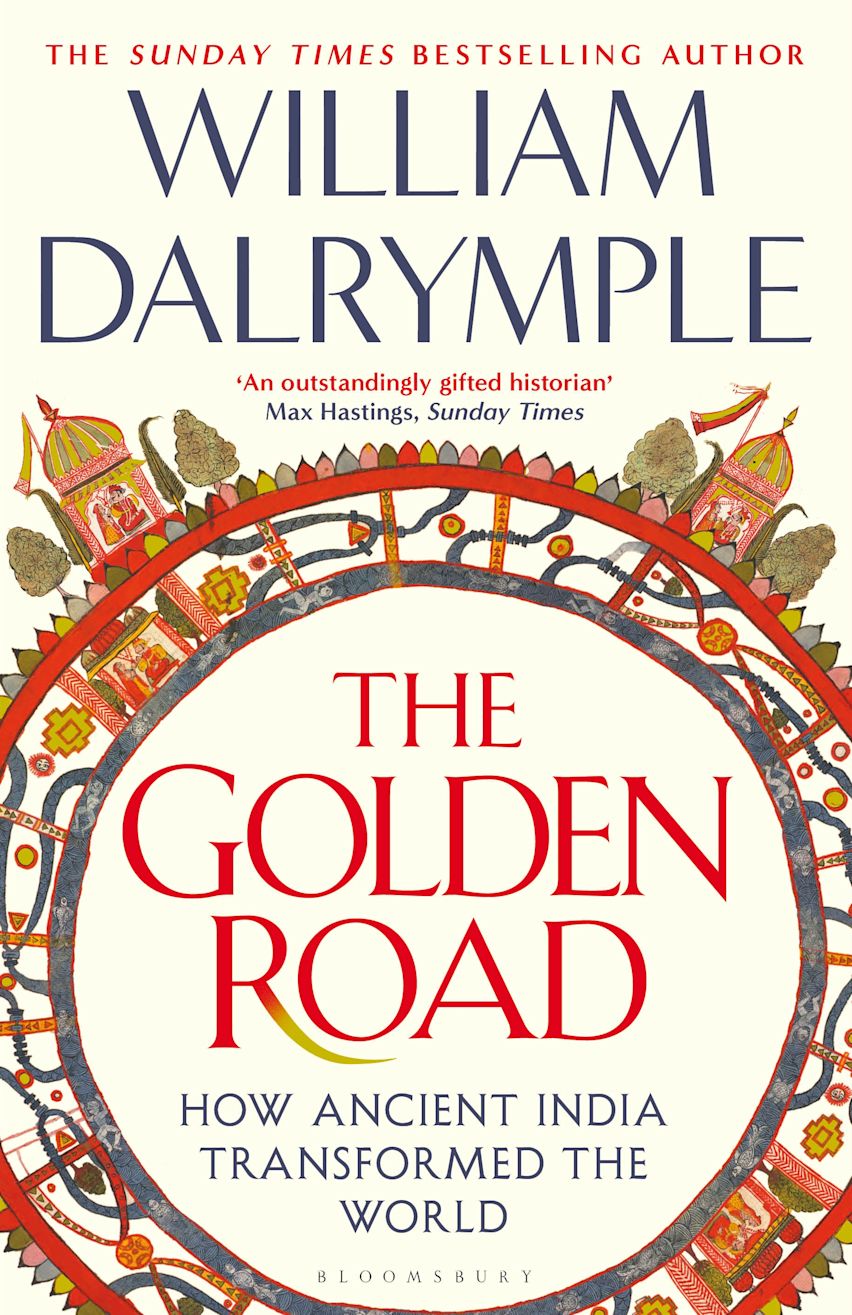The history book that will transform your view of early civilisation
Forget the Silk Roads, it’s the Golden Road we should be celebrating. Renowned historian William Dalrymple argues that, thanks to its major role in global trade between AD300 and 600, it’s India, rather than China, to which we owe some of the most important developments in human civilisation, writes Melanie McDonagh

With his new book, the historian William Dalrymple has written a lucid and compelling account of why it is India, not China, to which we owe the most important developments in human civilisation. “The Golden Road,” he writes, “aims to highlight India’s often forgotten position as a crucial economic fulcrum and civilisational engine, at the heart of the ancient and early medieval worlds, and as one of the main motors of global trade and cultural transmission in early world history, fully on a par with and equal to China.”
He must have been vexed, then, to find that the publication of his book coincides with a blockbuster exhibition, Silk Roads, at the British Museum, which traces roughly from AD500 to 1000 the route in goods and ideas between China and the West, a route that was given its name by a 19th-century German geographer, Ferdinand von Richthofen. Indeed, it is this concept that Dalrymple is gunning for. “Goods from China largely reached Rome merely as an exotic supplement to its thriving commerce with India ... Silk was never the main commodity imported to the West from the East ... the Silk Route barely existed in antiquity.” So, farewell, Silk Roads; hello, Golden Road.
So... are we more grateful to the Indians, for the numerals we now call Arabic and the number zero – plus Buddhism – or to the Chinese, for printing, gunpowder and paper? Silk versus peppercorns? Obviously, we are indebted to both.
India has long been acknowledged as the nursery of religion, and Dalrymple points out that there is a Christian community in Kerala that quite plausibly attributes its origins to the apostle Thomas (though he suggests, bizarrely, that St Thomas, known in scripture as “the Twin”, was thought to be the twin of Christ... no, just no).
He is particularly compelling in his account of Buddhism as the great Indian contribution to spiritual thought. But, while impassive images of the Buddha remind us that the faith maintains detachment from the world (there’s a strikingly emaciated version reproduced here, known as the Fasting Buddha), Buddhism, like Islam later, was very much up for mercantile sponsorship; it was entirely at ease with its lay devotees making money.
Whereas Hindu Brahmins regarded money as tainted and caste-compromising, Buddhist monks cheerfully accepted funds from merchants and, as in Renaissance Italy, many beautiful temple complexes were funded by mercantile patrons. Buddhism was India’s greatest intellectual export to the East – crucially, to China, between the third and fifth centuries AD, whence it was transmitted to Japan and Korea (see the above-mentioned Silk Roads exhibition) – and, near home, it flourished in present-day Afghanistan.
At the outset, Dalrymple acknowledges the danger, as in Monty Python, of attributing almost everything to India and/or Buddhism, and sometimes the narrative feels like that. Christian monasticism? Buddhist monks. Congregational worship? Buddhist temples. Chinese pagodas? Buddhist pillar shrines. But he is careful not to push the evidence too far.

Yet in some cases the evidence is overwhelming, as with the amount of Roman gold that was found along the trade routes with India: the map of the finds makes the case that from the time of Augustus, India was a crucial trading partner. He cites Roman authorities like Pliny, who took a dim view of the colossal sums that were transferred from Rome to India to pay for luxury goods such as diaphanous fabrics for silly women, rubies and diamonds – and peppercorns, which Roman cooks adopted with enthusiasm – not to mention exotic beasts, from leopards to a bad-tempered rhinoceros for the circus.
We find here a remarkable mosaic from Pompeii of a voluptuous woman who was plainly Indian (depictions of the female form are all well stacked), which may have been paid for by peppercorn traffic.
A multifarious and engaging narrative, which, like Indian trade, takes us in many directions, peppered with lively stories and charismatic individuals
This trade was a product of a brave development that was crucial for India’s relations with the West – namely, the harnessing of the monsoon winds that could sweep vessels westwards to the Red Sea in 40 days and back again when the winds changed; going by land would take three times as long.
The Golden Road, then, was a Golden Sea route, at least in respect of Western traffic, and the astonishing gold hoards found in now-Godforsaken outposts on the Red Sea testify to the sheer scale of the exchanges, which enriched Buddhist communities all along the Indian coast. One site had so many Roman goods, it caused the engaging archaeologist Sir Mortimer Wheeler to assume that he had found the remnants of a Roman trading colony; in fact, it was Indian.
These were exciting places of cultural exchange, and a melting pot that included Jews, Persians and Parthians. In this period, the oceans were not barriers to trade but the means of conducting it. It was a different matter when Alexander the Great came to India, arduously, by land in 326BC, and was astonished at the skinny Indians with their beards coloured blue or green, carrying parasols.
What about numbers? Wasn’t it the Arabs who gave us Arabic numerals? Well, this brings us to a fascinating element of the narrative, which locates the transmission of Indian concepts of astronomy and mathematics to Baghdad. Mathematics in India was partly driven by the need to time the Vedic ritual correctly (similarly, in the Old Testament, God creates the heavens so that men might know the times of festivals).
The flourishing of Indian astronomy was only part of a remarkable tradition of Indian mathematics, which reached extraordinary sophistication under the Gupta dynasty from the early fourth to the sixth century AD and culminated in the composition of the Sindhind of Brahmagupta, a 7th-century book of complex mathematical theory, which treated the symbol zero as the same as the other nine numerals (our 2, 5 and 7 remain very similar to the originals). It was this work that came to Abbasid Baghdad in AD773, and from there, ultimately, to Muslim Spain, and so on to us.
The Golden Road is, then, a multifarious and engaging narrative, which, like Indian trade, takes us in many directions, peppered with lively stories and charismatic individuals. It will make you look at the world differently.
‘The Golden Road’ by William Dalrymple (Bloomsbury), £30
Join our commenting forum
Join thought-provoking conversations, follow other Independent readers and see their replies
Comments
Bookmark popover
Removed from bookmarks